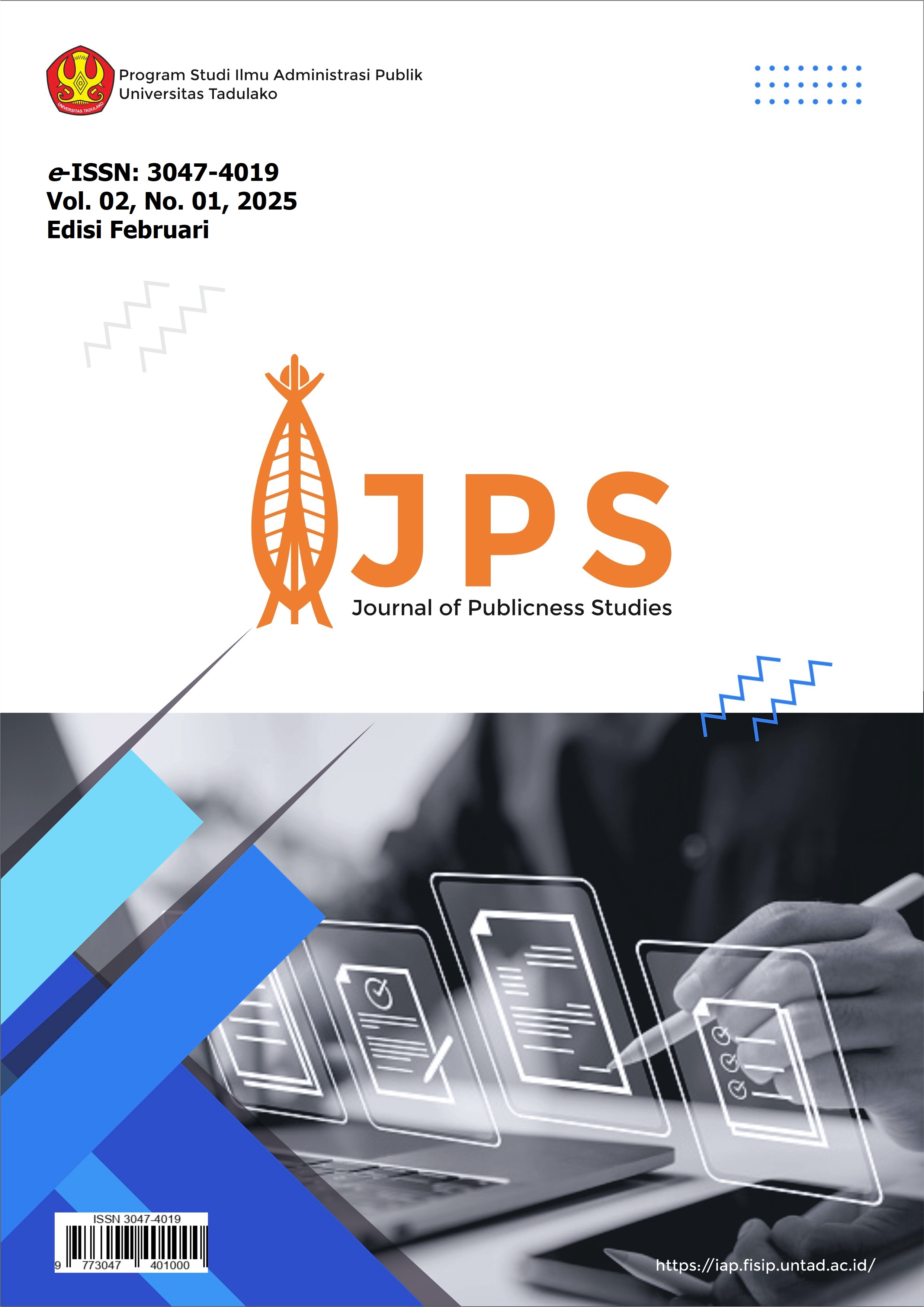INOVASI IDENTITAS KEPENDUDUKAN DIGITAL DI DINAS KEPENDUDUKAN DAN PENCATATAN SIPIL KOTA PALU
plugins.themes.academic_pro.article.main693a3c825fe3a
Abstrak
Penelitian ini bertujuan untuk mengetahui Inovasi Identitas Kependudukan Digital di Dinas Kependudukan dan Pencatatan Sipil Kota Palu. Metode penelitian yang digunakan Deskriptif Kualitatif, yaitu memberikan gambaran tentang fenomena atau fokus permasalahan yang tengah diteliti yang terjadi di lokasi penelitian sesuai fakta yang ada. Teknik pengumpulan data yang digunakan adalah observasi, wawancara informan secara mendalam dan dokumentasi. Teori yang digunakan dalam penelitian ini adalah teori Everett M. Rogers menggunakan lima indikator yaitu Relative Advantage (Keuntungan Relatif), Compatibility (Kesesuaian), Complexity (Kerumitan), Triability (Kemungkinan Dicoba), Observability (Kemudahan Diamati). Inovasi Identitas Kependudukan Digital belum berjalan dengan baik, dimana Inovasi Identitas Kependudukan Digital belum memiliki keunggulan dan nilai yang lebih sehingga dianggap masih kurang baik serta belum memberikan solusi nyata terhadap pelayanan administrasi kependudukan, kurang berhasil mencapai nilai kebutuhan masyarakat dan tuntutan perkembangan teknologi serta masih ada masyarakat yang mengalami kesulitan yaitu gangguan pada sistem yang menghambat proses dan kemampuan masyarakat dalam pemahaman suatu teknologi, fase uji coba aplikasi Identitas Kependudukan Digital (IKD) secara langsung kepada masyarakat di Kota Palu dan sosialisasi yang dilakukan belum optimal. Segala bentuk masalah ini perlu adanya perbaikan agar kedepannya dapat berjalan dengan baik.

